MaryAnn Bernal's Blog, page 253
July 30, 2014
World's largest solar boat on odyssey to find ancient inhabited site in Greece
Scientists on catamaran PlanetSolar will search for village built by Neothlithic Europeans and also survey Aegean Sea
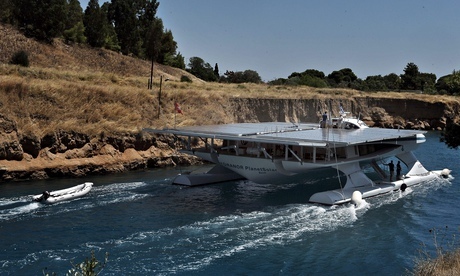
The world's largest solar-powered boat, the PlanetSolar catamaran, passes the Corinth Canal in central Greece on its way to hunt for a Neolithic village. Photograph: Vasilis Psomas/EPAThe world's largest solar boat, the catamaran PlanetSolar, is to embark on a Greek mission to find one of the oldest sites inhabited by man in Europe, an organiser said on Monday.
Starting on 11 August, a team of Swiss and Greek scientists will seek a "prehistoric countryside" in the south-eastern Peloponnese peninsula, University of Geneva researcher Julien Beck told AFP. The month-long mission, jointly organised with the Swiss school of archaeology and the Greek culture ministry, will search around the Franchthi cave in the Argolic gulf, where early Europeans lived between the Palaeolithic and Neolithic periods.
The cave was eventually abandoned around 3,000 BC but scientists assume the inhabitants must have built a village nearby.
"This cave was inhabited continuously for around 35,000 years... and we have reason to believe that towards the end of the Neolithic era, the inhabitants moved to a neighbouring site that is now underwater," Beck said.
"If we could find this village, it would be among the oldest in Greece and Europe," he said.
PlanetSolar, built in Germany, is 31 metres (100 feet) long and is powered by over 500 square metres of solar panels.
In 2012, the catamaran became the first vessel to circumnavigate the globe purely on solar energy. It has an average speed of 7.5 knots, or 14 kilometres (8.6 miles) per hour.
Whilst in Greece it will also conduct geophysical research and assist underwater archaeologists in Aegean Sea surveys.
http://www.theguardian.com/science/2014/jul/28/solar-boat-catamaran-search-ancient-inhabited-site-greece

The world's largest solar-powered boat, the PlanetSolar catamaran, passes the Corinth Canal in central Greece on its way to hunt for a Neolithic village. Photograph: Vasilis Psomas/EPAThe world's largest solar boat, the catamaran PlanetSolar, is to embark on a Greek mission to find one of the oldest sites inhabited by man in Europe, an organiser said on Monday.
Starting on 11 August, a team of Swiss and Greek scientists will seek a "prehistoric countryside" in the south-eastern Peloponnese peninsula, University of Geneva researcher Julien Beck told AFP. The month-long mission, jointly organised with the Swiss school of archaeology and the Greek culture ministry, will search around the Franchthi cave in the Argolic gulf, where early Europeans lived between the Palaeolithic and Neolithic periods.
The cave was eventually abandoned around 3,000 BC but scientists assume the inhabitants must have built a village nearby.
"This cave was inhabited continuously for around 35,000 years... and we have reason to believe that towards the end of the Neolithic era, the inhabitants moved to a neighbouring site that is now underwater," Beck said.
"If we could find this village, it would be among the oldest in Greece and Europe," he said.
PlanetSolar, built in Germany, is 31 metres (100 feet) long and is powered by over 500 square metres of solar panels.
In 2012, the catamaran became the first vessel to circumnavigate the globe purely on solar energy. It has an average speed of 7.5 knots, or 14 kilometres (8.6 miles) per hour.
Whilst in Greece it will also conduct geophysical research and assist underwater archaeologists in Aegean Sea surveys.
http://www.theguardian.com/science/2014/jul/28/solar-boat-catamaran-search-ancient-inhabited-site-greece

Published on July 30, 2014 13:20
Tree Rings Solve Mystery of World Trade Center Ship
by Megan Gannon

 Four years after a shipwreck was revealed at Ground Zero, a new report details how tree rings helped establish the origins of the wooden vessel
Four years after a shipwreck was revealed at Ground Zero, a new report details how tree rings helped establish the origins of the wooden vessel
In July 2010, amid the gargantuan rebuilding effort at the site of the World Trade Center in Lower Manhattan, construction workers halted the backhoes when they uncovered something unexpected just south of where the Twin Towers once stood.
(6.7 meters) below today's street level, in a pit that would become an underground security and parking complex, excavators found the mangled skeleton of a long-forgotten wooden ship.
Now, a new report finds that tree rings in those waterlogged ribs show the vessel was likely built in 1773, or soon after, in a small shipyard near Philadelphia. What's more, the ship was perhaps made from the same kind of white oak trees used to build parts of Independence Hall, where the Declaration of Independence and U.S. Constitution were signed, according to the study published this month in the journal Tree-Ring Research. [See Photos of the Ship and Its Tree Rings]
Archaeologists had been on-site throughout the excavation of the World Trade Center's Vehicular Security Center. They had found animal bones, ceramic dishes, bottles and dozens of shoes, but the excitement really kicked up when the 32-foot-long (9.75 m) partial hull of the ship emerged from the dirt.
The vessel was quickly excavated, to prevent damage from exposure to the air. Piece by piece, the delicate oak fragments were documented and taken out of the rotten-smelling mud. The timbers were sent to the Maryland Archaeological Conservation Laboratory, where they would be soaked in water to keep the wood from cracking and warping.
A few timbers were sent back to New York, just 20 miles (32 kilometers) north of the World Trade Center, to the Tree Ring Laboratory at Columbia University's Lamont-Doherty Earth Observatory in Palisades, New York. Researchers at the lab dried the fragments slowly in a cold room and cut thick slices of the wood to get a clear look at the tree rings.
The team established that the trees used to build the ship — some of which had lived to be more than 100 years old — were mostly cut down around 1773. Then, to determine where the wood came from, the researchers had to find a match between the ring pattern in the timbers and a ring pattern in live trees and archaeological samples from a specific region.
http://news.discovery.com/history/archaeology/tree-rings-solve-mystery-of-world-trade-center-ship-140728.htm


 Four years after a shipwreck was revealed at Ground Zero, a new report details how tree rings helped establish the origins of the wooden vessel
Four years after a shipwreck was revealed at Ground Zero, a new report details how tree rings helped establish the origins of the wooden vesselIn July 2010, amid the gargantuan rebuilding effort at the site of the World Trade Center in Lower Manhattan, construction workers halted the backhoes when they uncovered something unexpected just south of where the Twin Towers once stood.
(6.7 meters) below today's street level, in a pit that would become an underground security and parking complex, excavators found the mangled skeleton of a long-forgotten wooden ship.
Now, a new report finds that tree rings in those waterlogged ribs show the vessel was likely built in 1773, or soon after, in a small shipyard near Philadelphia. What's more, the ship was perhaps made from the same kind of white oak trees used to build parts of Independence Hall, where the Declaration of Independence and U.S. Constitution were signed, according to the study published this month in the journal Tree-Ring Research. [See Photos of the Ship and Its Tree Rings]
Archaeologists had been on-site throughout the excavation of the World Trade Center's Vehicular Security Center. They had found animal bones, ceramic dishes, bottles and dozens of shoes, but the excitement really kicked up when the 32-foot-long (9.75 m) partial hull of the ship emerged from the dirt.
The vessel was quickly excavated, to prevent damage from exposure to the air. Piece by piece, the delicate oak fragments were documented and taken out of the rotten-smelling mud. The timbers were sent to the Maryland Archaeological Conservation Laboratory, where they would be soaked in water to keep the wood from cracking and warping.
A few timbers were sent back to New York, just 20 miles (32 kilometers) north of the World Trade Center, to the Tree Ring Laboratory at Columbia University's Lamont-Doherty Earth Observatory in Palisades, New York. Researchers at the lab dried the fragments slowly in a cold room and cut thick slices of the wood to get a clear look at the tree rings.
The team established that the trees used to build the ship — some of which had lived to be more than 100 years old — were mostly cut down around 1773. Then, to determine where the wood came from, the researchers had to find a match between the ring pattern in the timbers and a ring pattern in live trees and archaeological samples from a specific region.
http://news.discovery.com/history/archaeology/tree-rings-solve-mystery-of-world-trade-center-ship-140728.htm

Published on July 30, 2014 13:15
King Richard III's Hasty Grave Opened to the Public
By Stephanie Pappas
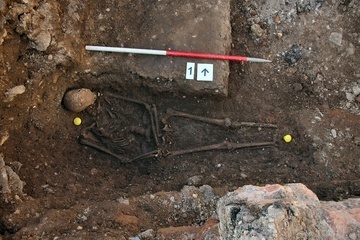
 The original hastily dug grave of Richard III of England (shown here) can now be viewed by the public at a visitor center for the king in Leicester, England.
The original hastily dug grave of Richard III of England (shown here) can now be viewed by the public at a visitor center for the king in Leicester, England.
Credit: University of Leicester
The public can now visit the original, hastily dug grave of King Richard III of England.
The monarch's skeleton no longer inhabits the grave, which sits in a city council parking lot in Leicester, England. The body of Richard III, which was found in the parking lot in August 2012 and removed for study, will be reburied in Leicester Cathedral next year.
On Saturday (July 26), however, the King Richard III Visitor Center opened at the site of the king's first grave.
"We are looking forward to welcoming people from Leicester, and from all over the world, to learn more about the dramatic story of the king's life, his brutal death at Bosworth Battlefield and the compelling story of his rediscovery," visitor center director Iain Gordon said in a statement. [Gallery: In Search of the Grave of Richard III]
Discovering Richard III
The spot became Richard's resting place after his death at the Battle of Bosworth Field in 1485. After his death in battle, the king was taken to Leicester and buried at a Franciscan monastery known as Grey Friars church. A marker once graced the grave, but time gradually swallowed the site: The church was demolished around 1538, and the land it stood on was subdivided and sold off in the 1700s.
Screenwriter and Richard III enthusiast Philippa Langley spearheaded the search for Richard III. Historical documents suggested the Grey Friars site might be under a city council building parking lot in Leicester. An archeological investigation led by the University of Leicester Archaeological Service dug into the lot. Within days, the team began to turn up window frames, walkway tiles and the floor of Grey Friars Church — complete with graves.
Most of the graves were neat, deep and squared-off, but one was an exception. This grave had sloping sides and was too small for the skeleton within, which had to be twisted and propped up to fit into the hole.
That skeleton? Richard III.
A monarch's grave
After anatomical and DNA study confirmed the skeleton's identity, the Leicester team announced the discovery of the king's body in February 2013. They reported that the skeleton showed signs of battle injuries, including two fatal blows to the back of the head and several post-mortem wounds inflicted on the king's corpse, likely as a way to humiliate him after death.
The new visitor's center does not dwell only on the king's death and ignominious burial. Displays tell the story of Richard's rise to power during the War of the Roses, a bitter civil war between dynasties. They also tell of Richard III's death and how his defeat ushered in the Tudor dynasty. Finally, the center provides a walk through the search for Richard III's body and the science used to identify the bones as the king's.
Visitors can view a three-dimensional replica of the king's bones, and visit the gravesite itself, "preserved in a quiet, respectful setting" according to the Leicester City Council. The city expects to welcome 100,000 visitors to the center in the next year.
http://www.livescience.com/47053-king-richard-iii-grave-opens.html

 The original hastily dug grave of Richard III of England (shown here) can now be viewed by the public at a visitor center for the king in Leicester, England.
The original hastily dug grave of Richard III of England (shown here) can now be viewed by the public at a visitor center for the king in Leicester, England.Credit: University of Leicester
The public can now visit the original, hastily dug grave of King Richard III of England.
The monarch's skeleton no longer inhabits the grave, which sits in a city council parking lot in Leicester, England. The body of Richard III, which was found in the parking lot in August 2012 and removed for study, will be reburied in Leicester Cathedral next year.
On Saturday (July 26), however, the King Richard III Visitor Center opened at the site of the king's first grave.
"We are looking forward to welcoming people from Leicester, and from all over the world, to learn more about the dramatic story of the king's life, his brutal death at Bosworth Battlefield and the compelling story of his rediscovery," visitor center director Iain Gordon said in a statement. [Gallery: In Search of the Grave of Richard III]
Discovering Richard III
The spot became Richard's resting place after his death at the Battle of Bosworth Field in 1485. After his death in battle, the king was taken to Leicester and buried at a Franciscan monastery known as Grey Friars church. A marker once graced the grave, but time gradually swallowed the site: The church was demolished around 1538, and the land it stood on was subdivided and sold off in the 1700s.
Screenwriter and Richard III enthusiast Philippa Langley spearheaded the search for Richard III. Historical documents suggested the Grey Friars site might be under a city council building parking lot in Leicester. An archeological investigation led by the University of Leicester Archaeological Service dug into the lot. Within days, the team began to turn up window frames, walkway tiles and the floor of Grey Friars Church — complete with graves.
Most of the graves were neat, deep and squared-off, but one was an exception. This grave had sloping sides and was too small for the skeleton within, which had to be twisted and propped up to fit into the hole.
That skeleton? Richard III.
A monarch's grave
After anatomical and DNA study confirmed the skeleton's identity, the Leicester team announced the discovery of the king's body in February 2013. They reported that the skeleton showed signs of battle injuries, including two fatal blows to the back of the head and several post-mortem wounds inflicted on the king's corpse, likely as a way to humiliate him after death.
The new visitor's center does not dwell only on the king's death and ignominious burial. Displays tell the story of Richard's rise to power during the War of the Roses, a bitter civil war between dynasties. They also tell of Richard III's death and how his defeat ushered in the Tudor dynasty. Finally, the center provides a walk through the search for Richard III's body and the science used to identify the bones as the king's.
Visitors can view a three-dimensional replica of the king's bones, and visit the gravesite itself, "preserved in a quiet, respectful setting" according to the Leicester City Council. The city expects to welcome 100,000 visitors to the center in the next year.
http://www.livescience.com/47053-king-richard-iii-grave-opens.html

Published on July 30, 2014 13:06
Johnny T's NYC Tourist Tips
Published on July 30, 2014 07:27
Interesting Facts about the Norsemen
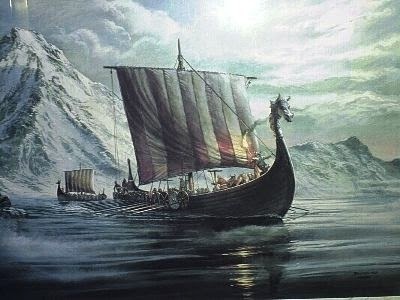
The Vikings had ear spoons that were used to clean out ear wax, practiced personal grooming and did bathe once a week.
The Vikings enjoyed sporting events such as wrestling, foot races, swimming and skiing to name but a few. They also played board games such as tabula (backgammon) to keep themselves occupied during the long winter months.
Viking women could choose their own husbands and divorce them.
Viking homes were referred to as longhouses, because of the shape, the main room being 100 feet in length.
In addition to drinking mead (honeyed alcoholic beverage), Vikings drank milk, buttermilk and wine.
The ravaging seafarers that attacked the civilized world did not represent the majority of the Scandinavian people, who were peaceful farmers and traders.
The Scandinavian seafarers became known as the Norsemen (North men), but referred to themselves as Ostmen.
Norwegian Vikings first attacked Ireland while the Danish Vikings attacked Britain.
Viking helmets were plain conical, not horned or winged, and made of leather.
Viking longboats were referred to as dragonships because of a carved dragon on the prow head.
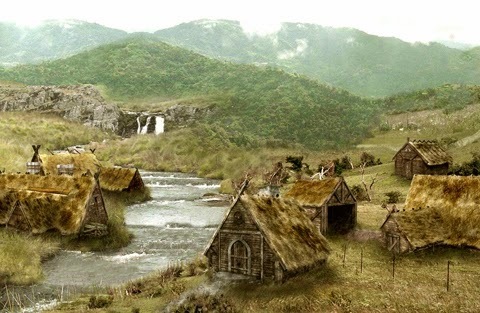

Published on July 30, 2014 05:25
History Trivia - St Vitalian begins his reign as Catholic Pope
July 30
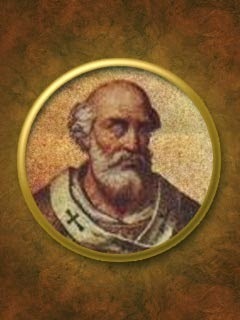
579 Pope Benedict I died. He was a Roman and the son of Boniface, and was called Bonosus by the Greeks. Unfortunately, there is little information about the first pope to take the name Benedict.
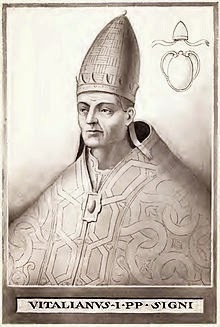
657 St Vitalian began his reign as Catholic Pope succeeding Eugene I. He was successful in improving relations with England, where the Anglo-Saxon and British clergies were divided regarding various ecclesiastical customs. At the Synod of Whitby, King Oswy of Northumberland accepted Roman practices regarding the keeping of Easter and the shape of the tonsure. Together with King Ecgberht of Kent, he sent the priest Wighard to Rome, to be consecrated in the Papal City after the death of Archbishop Deusdedit of Canterbury in 664, but Wighard died in Rome of the plague.

579 Pope Benedict I died. He was a Roman and the son of Boniface, and was called Bonosus by the Greeks. Unfortunately, there is little information about the first pope to take the name Benedict.

657 St Vitalian began his reign as Catholic Pope succeeding Eugene I. He was successful in improving relations with England, where the Anglo-Saxon and British clergies were divided regarding various ecclesiastical customs. At the Synod of Whitby, King Oswy of Northumberland accepted Roman practices regarding the keeping of Easter and the shape of the tonsure. Together with King Ecgberht of Kent, he sent the priest Wighard to Rome, to be consecrated in the Papal City after the death of Archbishop Deusdedit of Canterbury in 664, but Wighard died in Rome of the plague.

Published on July 30, 2014 05:24
July 29, 2014
Diane Turner - London Rocks - 29.07.2014
Published on July 29, 2014 11:17
Interesting Facts about the Anglo-Saxons

The Saxons got their name from their short sword called the scramasax.
The Saxons are Germanic invaders of England (5th century), which were comprised of three peoples: the Saxons, the Angles, and the Jutes. (The Angles became the English).
When the Anglo-Saxons ousted the Britons, they shied away from Roman towns, preferring to live in small villages.
The Anglo-Saxons did not believe in bathing, and monks only bathed five times a year.
The Anglo-Saxons put sheepskins around their beds to get rid of fleas.
Anglo-Saxon women owned property and possessions, retaining ownership after marriage.
The Anglo-Saxon language is referred to as Old English.
The Anglo-Saxons were pagans until they were converted to Christianity by Saint Augustine in the 6th century.
The Anglo-Saxon age lasted 600 years (410-1066).
The Anglo-Saxon Chronicle is a collection of annals chronicling Anglo-Saxon history , created during the reign of Alfred the Great (9th century).


Published on July 29, 2014 04:48
History Trivia - Sack of Thessalonica by Saracen raiders
July 29 2
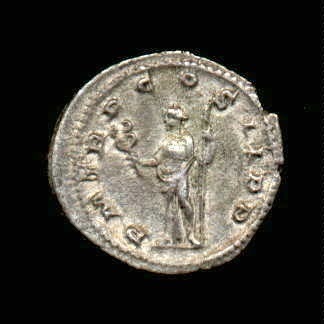
38 The Praetorian Guard stormed the palace and captured Pupienus and Balbinus. They were dragged through the streets of Rome and executed. On the same day Gordian III, age 13, was proclaimed emperor.
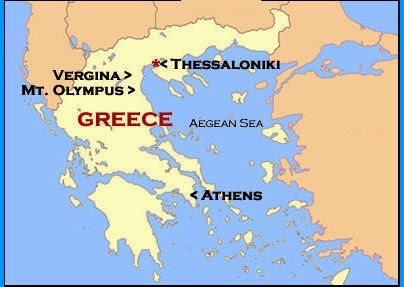
904 Sack of Thessalonica: Saracen raiders under Leo of Tripoli sacked Thessalonica, the Byzantine Empire's second-largest city, after a short siege, and plundered it for a week.
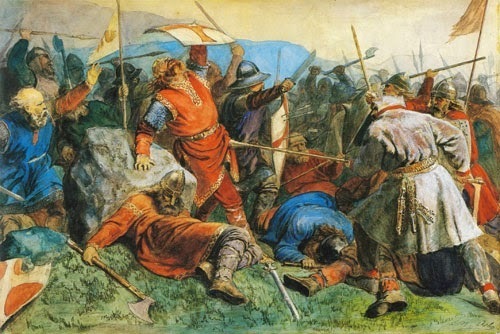
1030 Ladejarl-Fairhair succession wars: Battle of Stiklestad – King Olaf II, the patron saint of Norway, fought and died trying to regain his Norwegian throne from the Danes.

1565 The widowed Mary, Queen of Scots, married Henry Stuart, Lord Darnley, Duke of Albany, at Holyrood Palace in Edinburgh, Scotland.
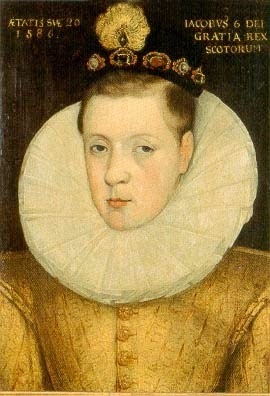
1567 James VI was crowned King of Scotland at Stirling.


38 The Praetorian Guard stormed the palace and captured Pupienus and Balbinus. They were dragged through the streets of Rome and executed. On the same day Gordian III, age 13, was proclaimed emperor.

904 Sack of Thessalonica: Saracen raiders under Leo of Tripoli sacked Thessalonica, the Byzantine Empire's second-largest city, after a short siege, and plundered it for a week.

1030 Ladejarl-Fairhair succession wars: Battle of Stiklestad – King Olaf II, the patron saint of Norway, fought and died trying to regain his Norwegian throne from the Danes.

1565 The widowed Mary, Queen of Scots, married Henry Stuart, Lord Darnley, Duke of Albany, at Holyrood Palace in Edinburgh, Scotland.

1567 James VI was crowned King of Scotland at Stirling.

Published on July 29, 2014 04:35
July 28, 2014
History Trivia - 1586 Sir Thomas Harriot introduced potatoes to Eur
July 28,
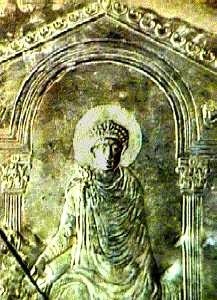
388 Battle at Aquileja (northern Italy): Emperor Theodosius defeated Emperor Magnus Maximis. 1.
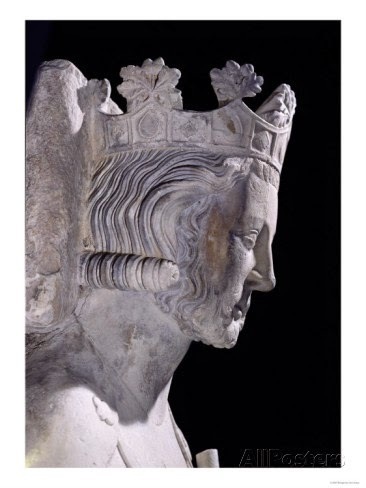
754 Pope Stephen II made Pippin the Short King of France. He was the first King of the Franks of the Carolingian dynasty.
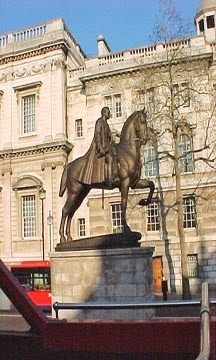
1540 Thomas Cromwell, King Henry VIII's chief minister, was executed for treason.

1540 Henry VIII of England married his fifth wife, Catherine Howard.
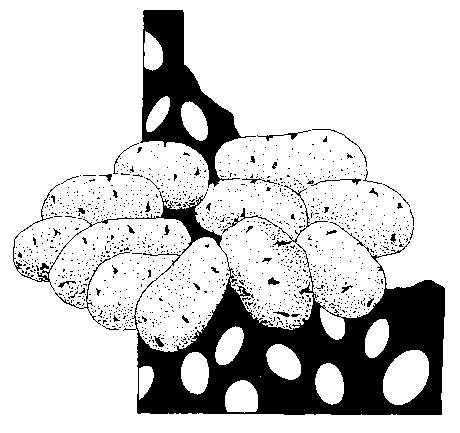
1586 Sir Thomas Harriot introduced potatoes to Europe.


388 Battle at Aquileja (northern Italy): Emperor Theodosius defeated Emperor Magnus Maximis. 1.

754 Pope Stephen II made Pippin the Short King of France. He was the first King of the Franks of the Carolingian dynasty.

1540 Thomas Cromwell, King Henry VIII's chief minister, was executed for treason.

1540 Henry VIII of England married his fifth wife, Catherine Howard.

1586 Sir Thomas Harriot introduced potatoes to Europe.

Published on July 28, 2014 04:36





